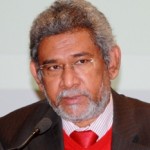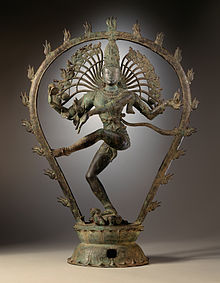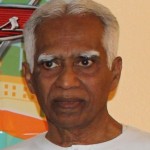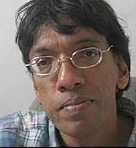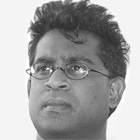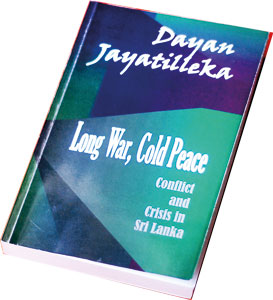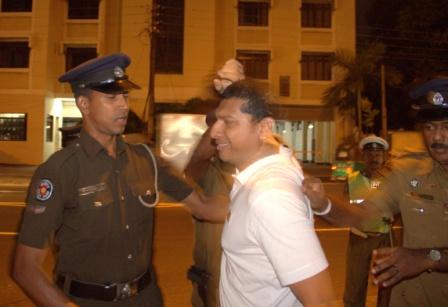–
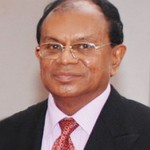
Dr. Laksiri Fernando
Seniors in different societies play different roles. Some years back when I first came across the name (Japan) Silver Volunteers (JSV), I wondered which ‘Silva’ had founded that organization in Japan. No, I was mistaken hearing the indistinct pronunciation. It was not Silva but Silver to mean, in our parlance, ‘grey haired’ generation. These JSV people even go overseas for voluntary work and had come to Sri Lanka as well. This generation in Japan exceeds 20 per cent of the population. In Sri Lanka this group is reaching 10 per cent, to mean the generation of over 60s.
What I am trying to say does not necessarily depend on the size of the group, but their experience, knowledge and unique capacity as seniors. In Australia, National Seniors Australia is a large non-profit making organization working for the welfare and recreation of the seniors. I am not even thinking of that kind of an organization. In Belgium, some seniors are running a hidden-camera TV comedy called ‘Benidorm Bastards’ which is of course humorous and also critical of hypocrisy in society. During the Vietnam War some seniors in the US took to the streets and protested alongside the young against that despicable war. In recent times, again the American seniors are voicing their protest against the insufficient Medicare system among other issues.
There were few senior citizens’ organizations in Sri Lanka few years back but except for one or two, others were not involved in social or political issues. Seniors today are also a sector most hit by the current inflation, financial scams, electricity rate hike without any direct concessions given on the part of the government, unlike in many other countries under similar circumstances. They are a sector most neglected.
However, more than the role of such organizations or such issues, what I am proposing here is a role for the seniors who were prominent in public life in the past, either in the public or the private sector as administrators, professionals, academics or even politicians, in defending the country’s diminishing international profile by fighting against violence, corruption and communalism and standing for democracy and justice. This would be a great service for defending the country’s deteriorating democracy, human rights and justice and fairness to all individuals and communities. If someone asks me if I am referring to the elite, yes, I am referring to them without neglecting some of the seniors coming from the working class or the trade union movement.
Seniors undoubtedly can play a major role in resurrecting democracy and on the issues of justice. They were born before or just after the independence (1948) in an atmosphere of much hope and promise for the country’s progress and development. They have experienced the best traditions of this country either in liberal or left politics within all communities; the Sinhalese, the Tamils and the Muslims. They entertained differences of opinion, at times heated ones, and knew how to resolve them through dialogue and negotiations. They have had much exposure to the international trends during the Vietnam War, the student’s movements in the 1960s, the collapse of communism and debates on colonialism or the non-aligned movement. Their views by and large are not tainted by narrow East West conflict, nationalism or completely self-centred ethnic or religious interests while conscious about justice in all these issues and areas. They are not narrow nationalist but may be enlightened patriots. They are in essence an enlightened generation although at times had to serve the country or different regimes almost suppressing their genuine views or true conscience some being public servants or judicial officers.
At retirement and without other obligations, they are now free from most of these encumbrances except what they choose voluntarily. In essence they are free. They also may be largely free from family obligations or worries on financial matters except perhaps on health. This is their strength. They can be brave. They can be quite a ‘nuisance’ to a tyrannical regime which is the case in Sri Lanka today. Becoming at least a ‘nuisance’ is a profound non-violent method of struggle.
I have seen some of them writing to this forum as well as to others on public issues of national importance expressing their genuine and frank opinions. Although they have not expressed the same opinion, they have aired their opposition to the three main scourges of this country; violence, corruption and communalism. There are other issues that they have touched upon such as inter-communal justice or injustice. Some of these senior writers are: Rajasingham Narendran, RMB Senanayake, Latheef Farook, Savitri Goonesekere, Jayantha Dhanapala, Austin Fernando, S Sivathasan, CV Wigneswaran, SL Gunasekera, Chandra Jayaratne, Lal Wijenayake and Charitha Ratwatte to mention a few but not in a particular order. I have mentioned their names without their titles. There are others who have always been vocal like Basil Fernando or Jehan Perera perhaps among the seniors, and others who are young that I don’t intend to mention.
My main concern however would be about many others who could make a definitive contribution if they express their views or determination. They should organize. I beg to mention few names with their indulgence. Some of these are Bradman Weerakoon, Seelan Kadirgamar, Kumari Jayawardena, Laksiri Jayasuriya, Godfrey Gunatilleke, Kusumsiri Balapatabendi, Ranjith Amerasinghe, Lloyd Fernando, Chandrasena Maliyadda and KHJ Wijayadasa. I mention KHJ Wijayadasa with some gratification as he was one of my teachers who taught briefly at St Sebastian’s College, Moratuwa, but first inspired me to learn beyond a textbook. They and many others particularly from the Tamil and Muslim communities could play an important role in collectively inspiring the younger generations to fight for democracy and social justice and particularly against corruption, violence and communalism in society. I should also mention another name and that is former President Chandrika Kumaratunga whose contribution to a collective of seniors would be immensely useful.
I have also noticed many commentators to this forum in pseudonyms but appear to be seniors judging from the rapid ‘intrusions’ that they make. I am not referring to the few ‘regime defenders’ but to others who can come in their real names as much as possible and make a collective contribution. Alter all seniors have nothing much to lose, except perhaps their ‘self-inflicted chains.’ I am not proposing anything adventurous but to become an ‘intellectual nuisance’ to the regime and its acolytes. They all do not need to write, but they can get together and write petitions or statements and perhaps gather and mark their protests on issues relevant to democracy and human rights or holding a placard or poster. They can become a bigger nuisance that way. The government would not dare to do anything to the respected seniors, hopefully.
The strength of the seniors is also shown by the LLRC Report. If not for their vast experience, empathy for genuine human grievances, enlightened and democratic values the Report could not have received the national and international acclamation. Those commission members are an example for the others. Seniors should refuse any service to this brutal and tyrannical regime. Even if they have any ‘duty to perform’ it should be in the independent spirit like demonstrated by the LLRC. This regime should be starved of all intellectual support from the academia, public servants or professionals. It should be starved to extinction.
Let me finish this article with this story. People of Geneva every year celebrate a festival called L’Escalade in mid-December. It is about a victory over the invasion of the army of Savoy to subjugate Geneva in 1602. There are many versions to the story or the festival. It is popularly said however that when the hostile army invaded the city, the seniors first asked the youth to withdraw to the jungle for safety. When the troops entered the city they were happy because only the seniors were to be seen with women. Then they started celebrating the victory. Women in the meanwhile were cooking a large cauldron of soup. The seniors created nuisance by cracking jokes and ridiculing the troops. With the help of the seniors, the women then poured boiling soup over the celebrating troops. They were confused and disoriented. Then the city youth came and chased away the invaders. There were no soldiers in Geneva, but free men and women. This shows the power of the seniors and of course women which I forgot to specially mention in the article being a man perhaps.

